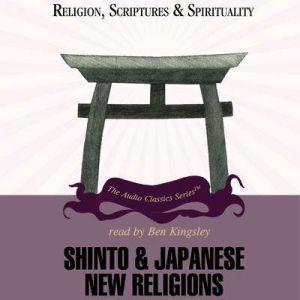

1 Rating(s)
List: $11.95
| Sale: $8.36
Club: $5.97
Shinto and Japanese New Religions
Author: Dr. Bryan Earhart
Narrator: Ben Kingsley
Unabridged: 2 hr 59 min
Format: Digital Audiobook Download
Publisher: Knowledge Products, Inc.
Published: 02/26/2006
Categories: Nonfiction, Religion
Synopsis
Japan has so many religious traditions that it has been called a living museum of religious traditions. Buddhism (originally from India) passed through China and Korea before entering Japan about 500 CE. Also at about this time Confucianism and Daoism (also called Taoism) were transmitted to Japan, where they were accepted primarily as philosophical and ethical ideas. Christianity first came to Japan in 1549, but its following has always remained very small. The oldest religious tradition in Japan is Shinto, a distinctive, highly diverse religion born of the culture and experience of the Japanese people. Shinto literally means way of the kami. Kami refers to the sacred, and there are countless kami manifested in natural forms (mountains, waterfalls, trees, rocks, etc.), in human forms, and even in human ancestors. Shinto has no founder, no explicit teachings or doctrines, and no universal claims. Shinto also is not exclusive; a Japanese individual may worship at a Shinto shrine yet also affirm the beliefs of Buddhism or folk religion. Worship at Shinto shrines occurs during annual festivals or at a personal time of need for prayer. Shrine enhances are marked by a sacred archway called a torii; the two most important shrine buildings are the sanctuary (honden) and the hall of worship (haiden). The most important written records of Shinto belief are the Kojiki (712 CE) and the Nihon Shoki (720 CE); influential figures of Shinto history include the fourteenthcentury pilgrim Saka and the eighteenthcentury scholar Motoori. In the last two centuries, many new religions have appeared in Japan; some examples are Kurozumikyo (1814), Tenrikyo (1838), Konkokyo (1859) and Hommon Butsuryuko (1857). Such new religions (as opposed to reforms) are marked by five key features: their founder, message, following, practices, and organization. State Shinto became Japans official religion after 1868, but was disestablished after Japans surrender in World War II (1945). Japan has since had a formal separation of church and state, with significant consequences for Japanese politics, society, and religious life.